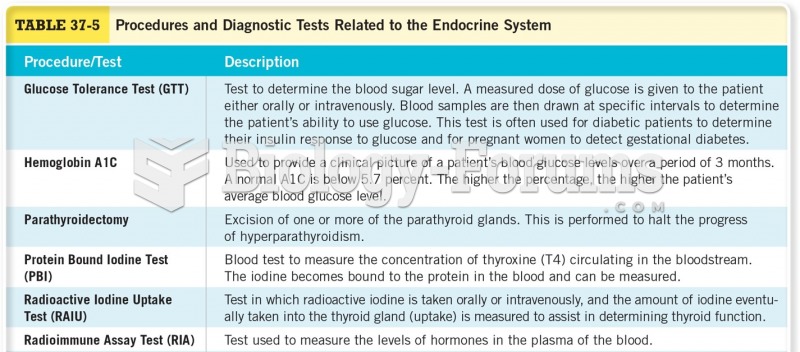Answer to Question 1
1
Rationale 1: If the adrenal gland responds by secreting corticosteroids after the cosyntropin injection, the pathology lies at the level of the pituitary or hypothalamus (secondary adrenocortical insufficiency).
Rationale 2: Carpal spasms are not related to this test.
Rationale 3: The test involves plasma levels of cortisol.
Rationale 4: Flushing is not related to this test.
Global Rationale: If the adrenal gland responds by secreting corticosteroids after the cosyntropin injection, the pathology lies at the level of the pituitary or hypothalamus (secondary adrenocortical insufficiency). Carpal spasms and flushing are not related to this test. The test involves plasma levels of cortisol.
Answer to Question 2
4
Rationale 1:This drug can be taken indefinitely is incorrect because zaleplon is indicated for short-term treatment of insomnia, and works immediately.
Rationale 2:Drinking a cup of tea with this drug will promote relaxation is incorrect because tea contains caffeine, a stimulant. Drinking tea with zaleplon will reduce the effectiveness of the drug.
Rationale 3:It will take about a week for this drug to be effective is incorrect because zaleplon is indicated for short-term treatment of insomnia, and works immediately.
Rationale 4: Combining OTC sleep-inducing antihistamines with zaleplon can cause excessive drowsiness.
Global Rationale: Combining OTC sleep-inducing antihistamines with zaleplon can cause excessive drowsiness. This drug can be taken indefinitely is incorrect because zaleplon is indicated for short-term treatment of insomnia, and works immediately. Drinking a cup of tea with this drug will promote relaxation is incorrect because tea contains caffeine, a stimulant. Drinking tea with zaleplon will reduce the effectiveness of the drug. It will take about a week for this drug to be effective is incorrect because zaleplon is indicated for short-term treatment of insomnia, and works immediately.







